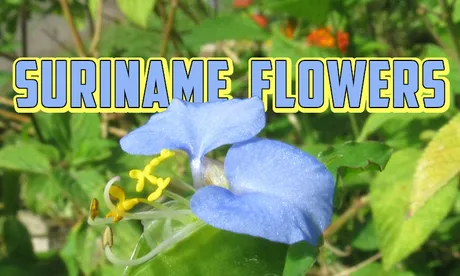
Taking some inspiration from @Sreypov, I've decided to learn a little about the flowers surrounding our apartment. 🌼🌺
**🕵️ A Multi-Purpose Educational Post 👨🎓**
I've been trying for a few weeks to improve my photography skills by learning how to use my Canon Powershot SX530 HS more effectively.
Also, I want to learn more about the plants surrounding us here in Suriname, so I walked out the front door with a mission of photography, natural history and medicinal use research of the flowers all around our apartment.
I wouldn't have been able to identify these flowers so quickly and with little effort without the help of the Picture This iOS app. I highly recommend it, as it certainly saved me a lot of time manually looking at photos of flowers trying to make matches.
**Crown Of Thorns | Christ Plant | Christ Thorn**
*Euphorbia Milii*
 ](https://files.peakd.com/file/peakd-hive/justinparke/TAEJJZ9k-45.JPG)
](https://files.peakd.com/file/peakd-hive/justinparke/TAEJJZ9k-45.JPG)Surprisingly this tiny flower is not from the Amazon or the Caribbean, but Madagascar. Although I've never heard this in person, some internet research seems to indicate some Brazilians use this plant as folk medicine for curing warts.
**White Mouth Dayflower | Slender Dayflower | Widow's Tears**
*Commelina Erecta*
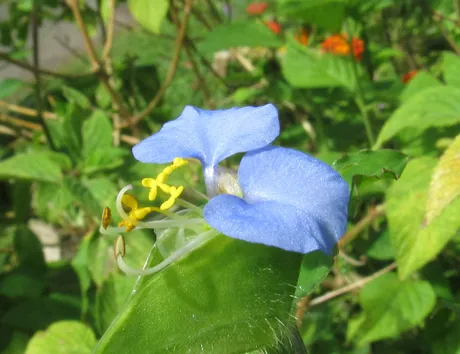 ](https://files.peakd.com/file/peakd-hive/justinparke/Ddq9kSDH-flowers.JPG)
](https://files.peakd.com/file/peakd-hive/justinparke/Ddq9kSDH-flowers.JPG)The Latin name of this one leaves me puzzled, but I think I know what the "erections" are protruding from this flower. Anyhow, this one is actually native to the Americas, and incredibly small, although hard to tell from the photo.
Various websites stated the sap of this flower is used to "treat skin irritations," which I think is a very wide net to cast. Even fewer sites specifically mentioned spider and insect bites as something the sap of this flower is effective in treating.
**Noble Dendrobium**
*Dendrobium Nobile*
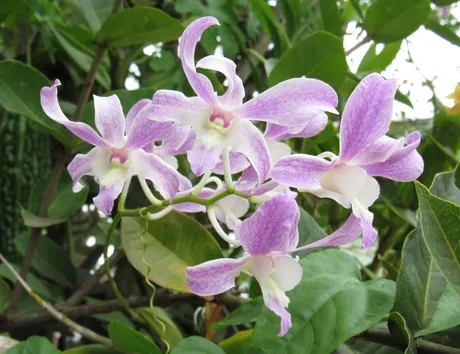 ](https://files.peakd.com/file/peakd-hive/justinparke/XlGmCcL9-555.JPG)
](https://files.peakd.com/file/peakd-hive/justinparke/XlGmCcL9-555.JPG)Native to southern China and South Asia, this orchid is apparently very common around the world, but I am no flower aficionado, so it's new to me.
I found information stating dendrobium derivatives are becoming popular as pre-workout stimulants, and many experts believe it might someday replace DMAA, an amphetamine derivative already common in pre-workout supplements.
**Jungle Geranium | Flame Of The Woods | Jungle Flame | Pendkuli | Faja Lobi**
*Ixora Coccinea*
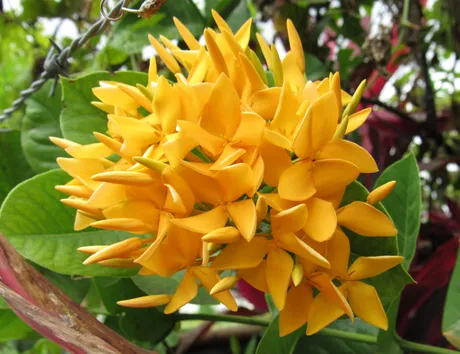 ]()
]()This one is the national flower of Suriname, the "Faja Lobi" (Fire Love) as it's called in Sranang, the creole language here in Suriname. I've seen this beautiful flower in many different colors.
This flower is not an Amazon native though, but was brought to Suriname from South Asia along with or by the indentured Indian workers. It seems there's a folk medicine consensus that decoctions of this plant and it's bark are useful for ulcers and external sores.
**Common Lantana**
*Lantana Camara*
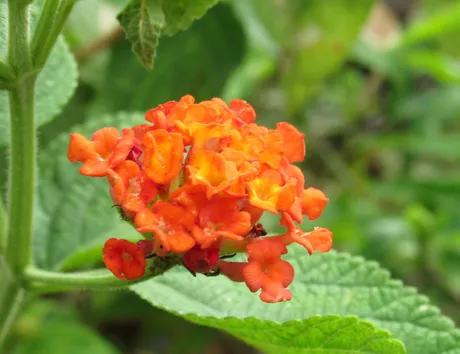 ](https://files.peakd.com/file/peakd-hive/justinparke/IOViMRau-orange.JPG)
](https://files.peakd.com/file/peakd-hive/justinparke/IOViMRau-orange.JPG)Finally, a flower native to South America. This plant is strong, toxic and invasive, although it has such a beautiful array of tiny flowers.
Common lantana shows promise as a potential ulcer-reducing agent (at least in rats), and it's also been used in Brazil to treat respiratory infections, although in a very concentrated form.
**Chaste Tree | Vitex | Chasteberry | Abraham's Balm | Monk's Pepper**
*Vitex Agnus-Castus*
 ](https://files.peakd.com/file/peakd-hive/justinparke/BtlZikbL-blue.JPG)
](https://files.peakd.com/file/peakd-hive/justinparke/BtlZikbL-blue.JPG)I discovered that Germany has recently approved chaste tree extracts for the treatment of PMS, so this flower is not pure folk medicine, but has some strong scientific backing.
This tree is native to the Mediterranean, but seems to be a very common ornamental tree here in Paramaribo. I also read that monk's use to consume it to stave off sexual desires, but there is zero science for this having any effect on libido.
**Crape Myrtle | Crepe Myrtle**
*Lagerstroemia*
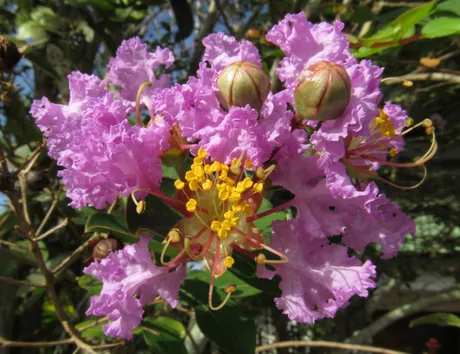 ](https://files.peakd.com/file/peakd-hive/justinparke/N8m3WIcQ-pink.JPG)
](https://files.peakd.com/file/peakd-hive/justinparke/N8m3WIcQ-pink.JPG)Native to South Asia, Southeast Asia, and Oceania, this shrub is primarily ornamental, but I found heaps of folk medicine uses with a little research.
I found everything from cancer to diabetes listed as the illnesses this plant can cure or treat, but little scientific evidence. Seems there are a lot of flavinoids, saponins, and tannins within this plant, so I'm sure it deserves more research.
**Aphrodite's Phalaenopsis**
*Phalaenopsis Aphrodite*
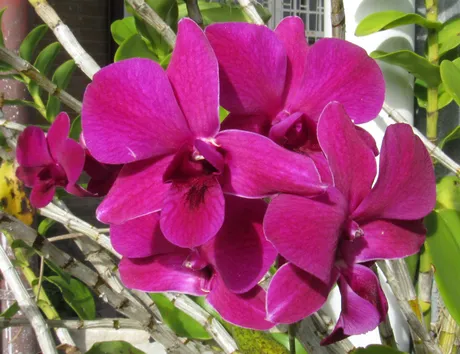 ](https://files.peakd.com/file/peakd-hive/justinparke/0zZmjnyR-pink-red.JPG)
](https://files.peakd.com/file/peakd-hive/justinparke/0zZmjnyR-pink-red.JPG)This plant grows right outside our front door, and provides us with a little beauty every morning. It's native to Taiwan and the Philippines, and apparently a favorite orchid growers. "Wow! I am really learning a lot today."
This thing is hearty, because the one at our landlord's house is just a rootball sitting above the bricks, doesn't get rain because it's under a partial roof, and yet still seems to thrive and stay green. I wasn't able to find any medicinal uses.
**#POSH**
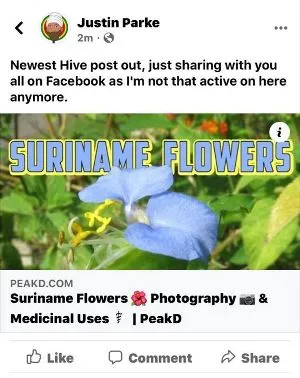 ](https://www.facebook.com/justinkparke/posts/10221075635193359)
](https://www.facebook.com/justinkparke/posts/10221075635193359)**🙏 THANKS FOR READING 🙏**
 |
 |
 |
 |
 |
|---|
 ](https://peakd.com/c/hive-141359/created)
](https://peakd.com/c/hive-141359/created) |
 |
 |
 |
 |
 |
 |
 |
 |
 |
|---|---|---|---|---|---|---|---|---|---|
 |
 |
 |
 |
 |
 |
 |
 |
 |
 |
Return from Suriname Flowers 🌺 Photography 📷 & Medicinal Uses ⚕️ to Justin Parke's Web3 Blog

